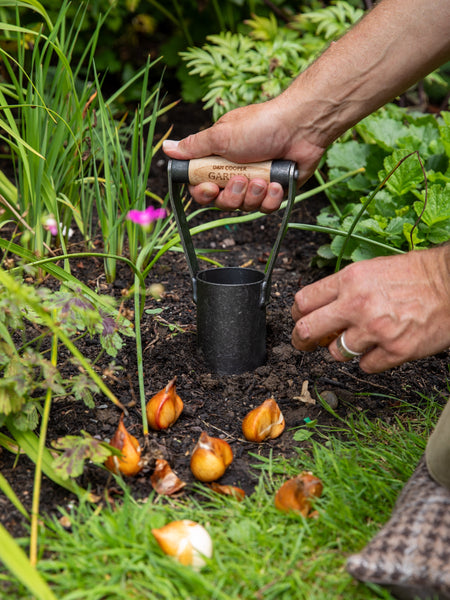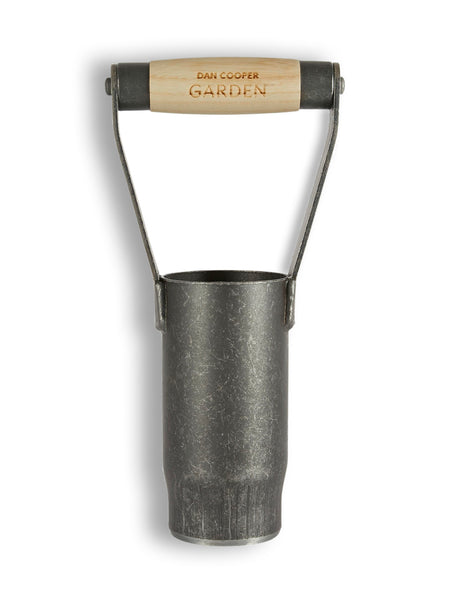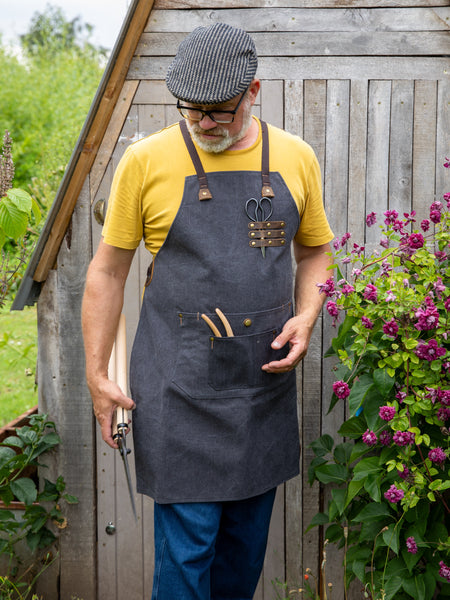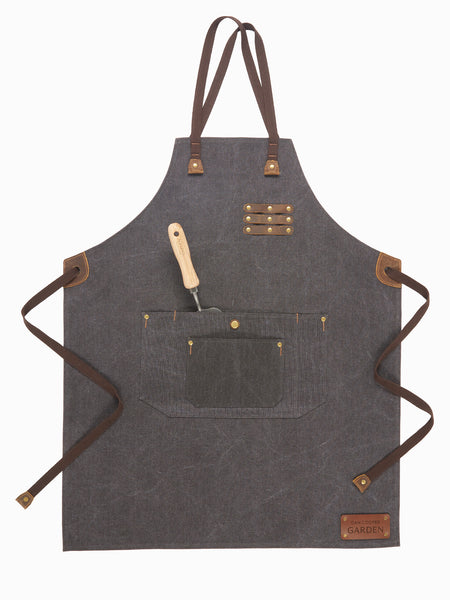Raising plants from bulbs* is one of the easiest and most rewarding ways to fill your garden with vibrant colour. How so? The simple reason is that the hard work is done for you. Inside a bulb, nature has cleverly packed almost everything the plant needs to grow, ensuring it's primed and ready. Think of a bulb like a cake mix - you simply need to add water, air and warmth to get it going. It’s pretty hard to go wrong, at least in the first season. After that, bulbs require minimal care and attention to keep them blooming annually.
In this short guide, I will explain when and how to plant spring flowering bulbs. First, here’s what to look out for when buying them.
Bigger is Better
There are many ways to buy bulbs - in garden centres, supermarkets and from online specialists. The choice is vast, from crocuses the size of your little finger to towering alliums two metres tall. The best flowers are produced by large, healthy bulbs, so seeing what you are getting is always helpful. Bigger is better because everything the plant needs is already locked inside, including the embryonic flower bud. Bigger is often more expensive too, since large bulbs take longer to develop. Always compare like-for-like sizes when shopping around for bulbs as there can be a steep price rise for every extra centimetre in diameter. This differential is fair and reflects the quality of the plants that will grow from them; as with most things in life, you get what you pay for. Look for firm, blemish-free bulbs; any suggestion of wrinkling, softness, bruising or mould is a bad sign.

Bulbs should be free of blemishes, dry patches, bruises or pock marks. These tulips would benefit from a dusting of sulphur to stop grey mould from developing.
Act Fast, Stay Cool
Your bulbs will be happiest in the ground, so my best advice is to buy them immediately before you intend to plant them. However, rarely is this possible and sometimes it might be a few weeks before the weather is right, the ground is soft enough, or you have time to spare. Store unplanted bulbs in a cool, dark, dry, well-ventilated place until you are ready. A garage or shed is fine, provided there are no rodents. Never leave bulbs in plastic bags or closed boxes, as they’ll get sweaty and start to rot quickly. Check them over regularly and if you detect any bluish-grey mould, dust them with yellow sulphur powder, which is natural and non-harmful.

Bulb planting, with the help of our gorgeous Patterjack, Millie.
When to Plant
Outdoor planted spring-flowering bulbs fall into two groups - those that need planting when the ground is still warm in order to develop roots before winter, and those best planted when the soil is cooler so that they don’t pick up any diseases before rooting in late winter or early spring.
Daffodils, hyacinths, alliums, crocuses, miniature irises, muscari and scillas are in the first group. They can be planted from September until the end of October, but the earlier the better.
Tulips are in the second group and are best planted from early November until the end of December provided the ground is not frozen.
When planting bulbs in containers, you can be more relaxed about timings, especially if you’re mixing several types in one pot. Tulips are at low risk of picking up diseases in sterilised potting compost, but ensure they have excellent drainage by adding some horticultural grit. This will stop them from getting too wet.
I’m often asked what to do with bulbs that remain unplanted in January or even February. The answer is to plant them straight away. Forgotten bulbs may flower later or not at all, but should start blooming normally the following year. You cannot wait until the next autumn as by then they’ll have used up all their inner strength and died.
Beware squirrels that love to plunder pots for bulbs. Secure chicken wire over the top of the pot if they’re a nuisance in your garden. This will serve to support the bulbs when they emerge in the spring.

These daffodils have been planted closely in a pot. The dry fibres are last year's roots.
How to Plant
Technically, bulbs don’t need soil to grow and bloom in year one. However, if you want them to keep coming back, they’ll need access to nutrients that generally come from the earth. Gardeners tend to plant bulbs in garden soil or bought-in compost to provide them with food and anchorage.
Most spring-flowering bulbs need plenty of light to grow well. Some will tolerate partial shade but choose an open, sunny site if you possibly can.
There’s a lot of fuss made about how deep to plant bulbs and which way up they should go. The truth is that bulbs will find the correct way up whichever way you plant them. They’ll also pull themselves down if planted too close to the surface. However, you can give bulbs a helping hand, and make yourself feel more expert, by planting bulbs with the pointed end upwards and the blunt or rounded end facing downwards. Leaves and flowers will emerge from the pointed end and roots from the other. It will do no harm if a bulb falls into a hole upside down.

These tulips have been planted closely as they're intended for producing cut flowers.
As a rule, create a hole or trench three times the bulb’s height - so if the bulb measures 8cm from top to bottom, make the hole is 24cm deep. Place the bulbs at the bottom and cover with soil: there’s no need to firm them in. Cyclamen are an exception as they prefer to hover below the soil surface, where they’re warmed by the sun.
How close to plant bulbs depends mainly on what you want to achieve. They shouldn’t be so close as to be touching, but if you’re treating them as annuals, they can be planted a bulb’s width apart to create a dense block of colour. If your bulbs are going to remain in situ and you have lots of space to fill, space them more widely, and over time they’ll spread to fill the gaps. After many years, if fewer or small flowers appear, this could be a sign of overcrowding. Your bulbs will need lifting, dividing and replanting.
When planting bulbs in grass, known as ‘naturalising’, you can either remove a section of turf, dig a hole and plant your bulbs before replacing it, or use a bulb planter. A bulb planter is like an apple corer, removing a cylinder of soil that is popped back into place when the bulb is planted. Assuming you wish to create the impression that the flowers have sprung up of their own accord, a good technique is to gently scatter the bulbs randomly on the grass and plant them where they fall.

Snake's head fritillaries (Fritillaria meleagris) naturalised in a garden meadow.
Aftercare
There’s no need to water bulbs after planting; autumn and winter should provide ample moisture to get them going. However, if the weather is dry, bulbs planted in pots need watering in spring as soon as shoots begin to emerge.
There’s not much more to do except watch and wait for a glorious display of flowers. After blooming, remove deadheads so that the plants put their energy back into the bulb rather than towards developing seeds. Do not remove foliage from any bulb until it’s withered and died naturally. All you will do is reduce the plant’s ability to produce a flowering-size bulb for the following year. Tying foliage in a knot is also to be avoided.
Fertiliser isn’t required when bulbs are first planted as they have everything they need packed inside. However, it’s helpful to feed them with a good all-round fertiliser such as liquid seaweed or blood, fish and bone from the moment they start flowering until the foliage turns yellow.
Spring flowering bulbs suffer from very few pests and diseases. Deer can be a nuisance where they’re free to roam and squirrels I’ve already mentioned. Daffodils are less attractive as they’re toxic to animals and humans if eaten. Slugs and snails may nibble at emerging shoots and tender flowers, but it’s rare for them to do much harm.

Lily-flowered tulip 'Ballerina' in an upcycled galvanised water trough.
*A Note About Bulbs
In this article I’ve used the term ‘bulb’ or 'bulbs' to apply to corms, tubers and rhizomes, as well as true bulbs. If you’re interested to understand the difference between them, read on.
- True bulbs are made up of fleshy scales that are the swollen base of leaves, wrapped around a growing point. If you cut a true bulb in half, it will look like an onion with a flat, often circular ‘basal plate’ from which roots will develop. Some bulbs, for example tulips, daffodils and hyacinths, have a paper ‘tunic’ that protects them from drying out. Other bulbs, such as lilies, do not have this layer which makes them more vulnerable out of the ground.
- Corms are swollen stems without fleshy scales. Roots emerge from a flat ‘basal plate’. If you cut them in half, inside you will find a solid mass. Examples of corms are gladioli and crocuses.
- Tubers are also swollen stems but instead of having a distinct top and bottom, they have dormant buds called ‘eyes’ which can develop into shoots or roots. Dahlias, anemones and potatoes are tubers.
- Rhizomes are another type of thickened stem that grows just beneath the soil surface, sending up shoots at ‘nodes’. Plants with rhizomes can spread quite aggressively, for example lily of the valley, and other more slowly, such as bearded iris.
 Tulip 'Apricot Emperor' underplanted with blue forget-me-nots.
Tulip 'Apricot Emperor' underplanted with blue forget-me-nots.





